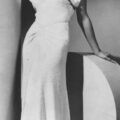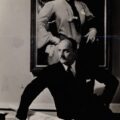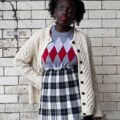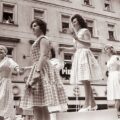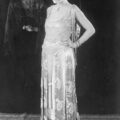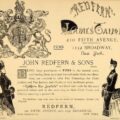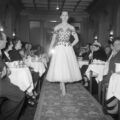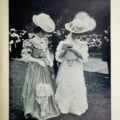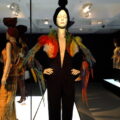The Origins of Haute Couture
June 15, 2022The origins of Haute Couture are in 19th century France. France was a great centre of fashion, and it only needed one clothes-mad empress to give Paris its lasting reputation. It also gave work to thousands and thousands of French people, so perhaps she wasn’t just clothes-mad, but a shrewd economic strategist.
The origins of Haute Couture – The Royal Courts of France
The origins of Haute Couture lie back in the court of Empress Eugénie of France, who had married Napoleon III in 1853. Her official court dressmaker, announced in 1869, was to be Charles Frederick Worth, the Englishman who denoted himself “The Father of Couture”. Even before Worth came on the scene though, the Empress set fashions. She got changed at least four times a day, and never wore the same dress twice. Every year she held a great sale of her dresses for charity.
Eugénie was the person to popularise huge crinolines, and the colours she chose, the decorations added, and her hairstyles were quickly taken up and copied. They were known as “à l’impératrice”. France’s luxury industries were at their peak at this time, and Paris gained its reputation as the capital of fashion.
The Origins of Haute Couture – An Englishman Called Charles
The House of Worth which Charles Frederick Worth founded in 1858 also supplied many other clients. These included the royalty of other countries, as well as socialites and stars. As well as lovely afternoon dresses, lavish ball gowns and sparkling evening dresses, which he excelled in, he also provided couture fancy dress for his clients. It seems rather extravagant to commission a made to fit dress, costing today’s equivalent of thousands of pounds from a top designer just for one night, and in some slightly ridiculous theme.
But these society fancy dress balls were often the event of the year, and you had to appear your absolute best. The fancy dress outfits usually preserved a fashionable silhouette, such as tight waist and crinoline, but made in gold cloth, sewn in jewels, and with a headdress, for example, if the guest decided that they would be the Queen of the Nile. Or made in draped white silk (but still corsetted) with a different headdress for a Grecian Goddess. In fact, sometimes guests complained when the hosts had ideas about the lighting, and made it too dim and mysterious for everyone to be seen at their finest. All that effort wasted! Luckily, many fancy dress balls also included a photographer to preserve the memory, quite an innovation at the time.
An Haute Couture Fancy Dress Ball

The Countess of Warwick as Marie Antoinette. Image via Wikimedia.

The Origins of Haute Couture – The Duchess of Devonshire as Zenobia, Queen of Palmyra. Image via Wikimedia.
One held in 1897 at Devonshire House was described in detail by the Times. It included a commentary on what the Duchess of Devonshire wore. “The Duchess of Devonshire, as Zenobia, Queen of Palmyra, wore a magnificent costume. The skirt of gold tissue was embroidered all over in a star-like design in emeralds, sapphires, diamonds, and other jewels outlined with gold, the corners where it opened in front being elaborately wrought in the same jewels and gold to represent peacocks outspread tails. This opened to show an underdress of cream crepe de chine, delicately embroidered in silver, gold, and pearls and sprinkled all over with diamonds.
“The train, which was attached to the shoulders by two slender points and was fastened at the waist with a large diamond ornament, was a green velvet of a lovely shade, and was superbly embroidered in Oriental designs introducing the lotus flower in rubies, sapphires, amethysts, emeralds, and diamonds, with four borderings on contrasting grounds, separated with gold cord. The train was lined with turquoise satin. The bodice was composed of gold tissue to match the skirt, and the front was of crepe de chine hidden with a stomacher of real diamonds, rubies and emeralds and jewelled belt. A gold crown incrusted (sic) with emeralds, diamonds, and rubies, with a diamond drop at each curved end and two upstanding white ostrich feathers in the middle, and round the front festoons of pearls with a large pear shaped pearl in the centre falling on the forehead.”
A £50,000 Outfit

The Origins of Haute Couture – The 5th Duke of Marlborough at the ball. Image via Wikimedia.
Not to be outdone, the 9th Duke of Marlborough went as the French Ambassador to Catherine the Great. His outfit, made by Worth, was even more expensive. It was black velvet, embroidered with silver, pearls and diamonds. His waistcoat was gold and white damask. The outfit cost 5,000 francs – about £50,000 today.
Other Haute Couture Designers
There were many other fashion designers besides Worth. The origins of Haute Couture is officially French. The Chambre Syndicale de la Haute Couture needs to approve a couture designer to be on the list. There are a limited number of designers allowed to be part of the Chambre Syndicale. They need to employ a certain number of people, and have collections of a certain number of pieces to be allowed in. Once a couturier is a member, they are supported by the union with publicity. But just being a member is enough publicity in itself.
But of course, designers from all over the world created amazing made to measure fashion. The fashion industry has grow hugely.
From Twice a Year to All the Time
Haute couture collections used to be twice a year: spring/summer and autumn/winter. Now they are presented up to six times a year. Spring, Summer, Autumn, Winter, and two Resort. A house may design for men and women, so that’s 12 collections. They might present a collection in the traditional catwalks of London, Milan, New York and Paris. But increasingly, Shanghai, Hong Kong and Tokyo have become ultra important. There are well over a hundred fashion weeks around the world now.
As well as haute couture, many fashion designers present a ready to wear collection. This diffusion line has the flair of the designer, without the expense. The fashion house of Jean Paul Gaultier and Yves Saint Laurent, amongst others, also have famous perfume lines.



